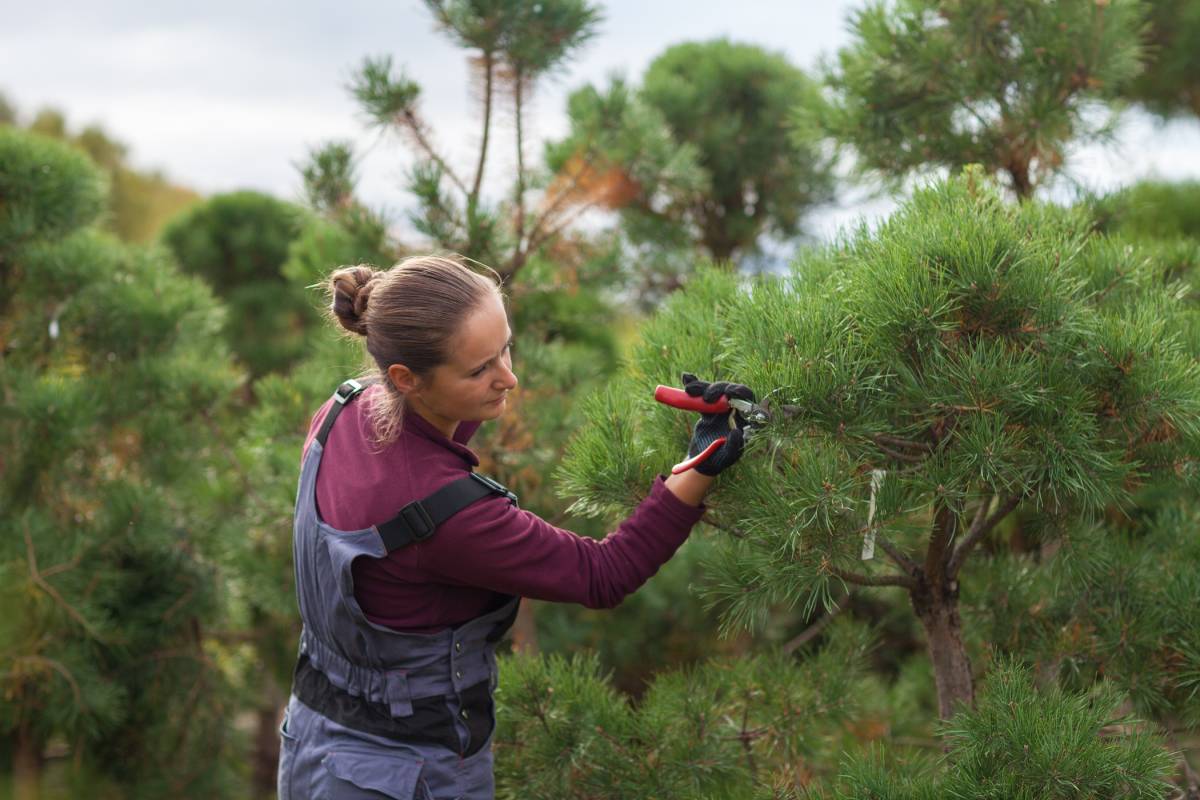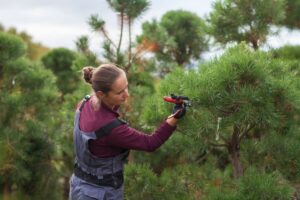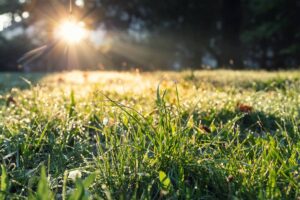Tree Lopping vs. Tree Pruning: What You Need to Know Before Deciding
Trees are a vital part of our surroundings—they add beauty, shade, and even improve the air we breathe. But when trees grow too large, become diseased, or pose risks to nearby structures, they require maintenance. That’s where tree management practices such as tree lopping and tree pruning come in.
Ever heard of tree lopping? It’s essentially the removal of parts of a tree—whether branches, limbs, or even sections of the trunk—to reduce size or address immediate concerns. At first glance, this may seem similar to pruning, but there are significant differences between the two approaches, both in method and long-term outcomes.
Some homeowners swear by lopping as a quick solution for overgrown or hazardous trees, while others argue pruning is the gentler and healthier option. So, which should you choose? Let’s break it down in detail so you can make an informed decision for your garden or property.
What Is Tree Lopping?
Tree lopping refers to the practice of cutting back a tree’s branches and limbs, often quite drastically, in order to manage its size, shape, or immediate risks. It can involve cutting large sections of a tree, and in some cases, almost the entire top of the tree is removed.
The main goals of lopping are:
- To reduce tree size quickly, especially when the tree is encroaching on power lines, roofs, or nearby structures.
- To remove diseased or damaged branches that may compromise the tree’s safety or spread infection.
- To address urgent hazards after storms or unexpected events that leave trees unstable or dangerous.
While this method has its critics, it can be the most practical solution in situations that require immediate intervention.
The Advantages of Tree Lopping
Although controversial, lopping does have several advantages when applied carefully and appropriately.
1. Immediate Size Reduction
One of the clearest benefits of lopping is that it quickly reduces the size of an overgrown tree. This is particularly important when a tree grows beyond its space limits and begins interfering with homes, fences, or infrastructure.
2. Hazard Mitigation
Large, heavy branches can pose risks if they hang over power lines, driveways, or rooftops. Lopping is often the fastest way to remove these threats before they cause costly damage or safety incidents.
3. Emergency Solutions
Storms in Australia can cause trees to break, split, or lean dangerously. In such emergencies, tree lopping provides a rapid way to restore safety by removing unstable parts of the tree.
4. Regeneration and Growth
Interestingly, some trees respond to lopping by producing dense regrowth. This bushier canopy can be desirable for creating shade or enhancing landscape aesthetics. However, not all trees respond positively, which is why expert advice is crucial.
The Risks and Downsides of Tree Lopping
While lopping offers immediate results, it also carries risks:
- Stress on the Tree: Removing large portions can shock the tree, leaving it vulnerable to disease and pests.
- Weak Regrowth: The new shoots that emerge after lopping may be weaker and more prone to breakage.
- Reduced Lifespan: Improper or frequent lopping can shorten the life of a tree by disrupting its natural growth cycle.
- Aesthetic Damage: Aggressive lopping can sometimes leave trees looking bare, unbalanced, or unattractive.
This is why many arborists recommend considering pruning before resorting to lopping, unless the situation is urgent.
What Is Tree Pruning?
Pruning is a more controlled and careful method of managing tree growth. Instead of cutting large sections, pruning focuses on selectively removing dead, diseased, or unnecessary branches to encourage healthy development.
Pruning can serve several purposes:
- Improving tree health by removing infected or pest-ridden branches.
- Enhancing aesthetics by shaping the tree for a balanced, attractive appearance.
- Allowing sunlight and air circulation, which benefits both the tree and surrounding plants.
- Promoting safe growth by eliminating small hazards before they become bigger issues.
Unlike lopping, pruning is usually part of a long-term maintenance plan, done regularly to keep trees healthy and manageable.
Key Differences Between Tree Lopping and Tree Pruning
It’s easy to confuse the two, but here are the main distinctions:
- Lopping is more drastic, removing large portions of a tree to quickly reduce its size or address hazards.
- Pruning is selective and precise, targeting only specific branches for the sake of health, aesthetics, or structure.
- Lopping is often a one-time or emergency measure, while pruning is part of ongoing maintenance.
- Pruning is less stressful for trees, whereas lopping carries higher risks if done improperly.
When Should You Choose Lopping Over Pruning?
Deciding between lopping and pruning comes down to your specific situation:
1. Safety Hazards
If a tree poses an immediate risk—such as cracked limbs after a storm or branches threatening power lines—lopping may be the quickest and most effective choice.
2. Tree Health
For maintaining overall tree health, pruning is the safer option. It allows targeted removal of unhealthy or dead sections without stressing the entire tree.
3. Aesthetic Goals
Pruning is preferred when the goal is to shape and beautify a tree, as it provides greater control over the tree’s appearance.
4. Space Management
If a tree has simply outgrown its space and is causing structural problems, lopping might be necessary to keep it under control.
The Role of Professional Arborists
Both lopping and pruning require expertise to avoid long-term damage. Professional arborists have the training to assess your tree’s condition, recommend the right approach, and carry out the work safely.
DIY lopping or pruning can be risky—not only for the tree but also for your own safety. Trees often require climbing, the use of chainsaws, and working near power lines, which can be hazardous without the right equipment and knowledge.
Responsible Tree Care in Perth
In Perth, where gum trees and other large species are common, tree management plays a crucial role in maintaining both safety and natural beauty. Property owners must balance the need to preserve greenery with practical concerns like storm safety and property protection.
That’s where professional services like Lakeside Tree Lopping and Stumps in Perth come in. With expertise in both lopping and pruning, they can help you choose the right method for your trees while ensuring the work is carried out responsibly and safely. Whether it’s removing a dangerous limb after wild weather or shaping a tree to fit perfectly into your garden, professionals ensure your trees remain assets rather than liabilities.
Long-Term Tree Maintenance Tips
To reduce the need for drastic lopping in the future, consider the following maintenance strategies:
- Regular Inspections: Have your trees checked annually for signs of disease, pests, or structural weakness.
- Scheduled Pruning: Carry out pruning every 1–3 years depending on the tree species and growth rate.
- Soil and Mulching Care: Healthy soil and proper mulching help trees grow strong and resilient.
- Storm Preparation: Trim potentially hazardous branches before storm season to minimise risks.
- Work with Experts: Engage a professional arborist for advice tailored to your specific trees and environment.
Conclusion
Tree lopping and pruning are two distinct approaches to managing trees, each with its benefits and drawbacks. Lopping offers immediate solutions for urgent safety issues or overgrowth, but it can stress the tree and affect long-term health if done incorrectly. Pruning, on the other hand, is a more measured and sustainable method of encouraging growth, health, and beauty.
Ultimately, the decision depends on your goals—whether it’s safety, aesthetics, or long-term tree vitality. Whichever method you choose, involving professionals is the best way to ensure safe, effective, and responsible tree care.
If you’re in Perth and need help deciding between lopping and pruning, or if you require immediate assistance with a hazardous tree, Lakeside Tree Lopping and Stumps in Perth offers reliable, expert services to keep your property safe and your trees thriving.














Post Comment